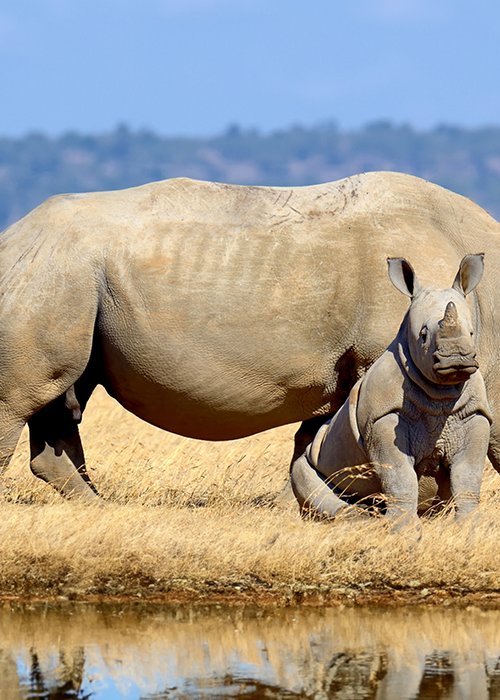Rhinoceroses appeared on Earth around 40 million years ago and spread across Asia, Africa, Europe and North America, coexisting with humans for millennia, as evidenced by paintings depicting these animals found in the Chauvet cave in southern France and dating back over 30,000 years. Today, only 5 of the original 30 species remain: the white rhinoceros (Ceratotherium simum), the black rhinoceros (Diceros bicornis), the Indian rhinoceros (Rhinoceros unicornis), the Sumatran rhinoceros (Dicerorhinus sumatrensis) and the Javan or Sunda rhinoceros (Rhinoceros sondaicus). While the black and white rhinoceros are found in Africa, the other three species are found in Asia. According to the IUCN Red List of Threatened Species, the world's most comprehensive database on the conservation status of animals and plants, all five rhino species are threatened with extinction:
- White rhinoceros: NT-Near Threatened
- Sumatran rhinoceros: CR-Critically Endangered
- Black rhinoceros (various species): CR -Critically Endangered
- Sunda rhinoceros: CR-Critically Endangered
- Indian rhinoceros: VU-Vulnerable
The existence of these majestic and peaceful creatures is threatened by poaching: these massive herbivores are relentlessly hunted for their horns, which have reached staggering prices of over $90,000 per kilogram on the black market. Rhinoceros horn, for which these animals are mutilated and killed, is particularly sought after in traditional Asian medicine, where it is believed to have the power to cure impotence and various ailments. Traditional Chinese medicine, for example, uses powdered rhino horn to treat fever, epilepsy, malaria, poisoning and abscesses, further fuelling demand and poaching. It's important to note, however, that rhino horn is made up of keratin, the same substance found in human nails, so any medicinal claims are based purely on folklore and have no scientific backing. In 1970, there were over 70,000 rhinos in Africa; today, Save The Rhino estimates that there are around 20,500 white rhinos and just under 5,000 black rhinos left. If current mortality rates continue - with one rhino killed every seven hours - rhinos could become extinct in the wild in less than 28 years. A fun fact: rhinos spend most of their time grazing on grass and often enjoy long soaks in mud pools, where they can spend up to nine hours a day.





